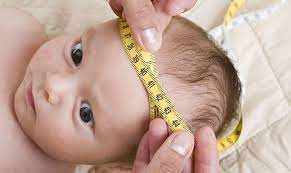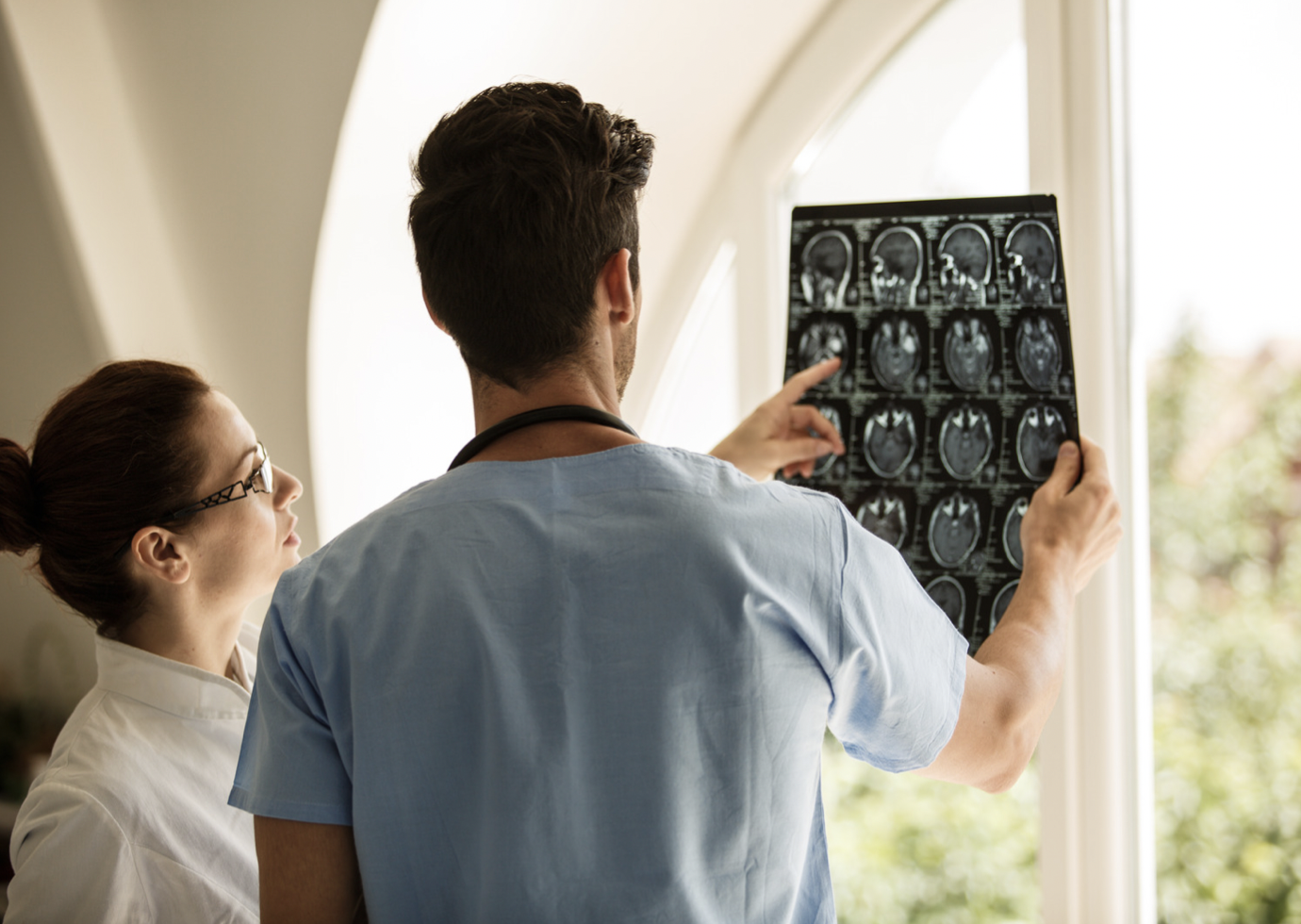Definisi
Cerebral palsy (CP, palsi serebral, PS) merupakan kelompok penyakit yang memengaruhi gerakan, otot, dan postur. ‘Cerebral’ berarti kondisi ini berhubungan dengan otak, sedangkan ‘palsy’ merujuk pada kelemahan atau masalah pada otot. Cerebral palsy disebabkan oleh adanya kerusakan pada area tertentu di otak yang mengatur pergerakan otot. CP dapat terjadi apabila daerah tersebut tidak berkembang dengan baik semasa kehamilan atau mengalami kerusakan, umumnya terjadi sebelum atau saat proses persalinan. CP bersifat statis dan non-progresif, yang artinya tidak bertambah berat seiring dengan berjalannya waktu.
Prevalensi cerebral palsy sebesar 2–3 kejadian per 1000 kelahiran hidup dan prevalensi ini cenderung meningkat.
Penyebab
Cerebral palsy disebabkan oleh gangguan pada perkembangan otak atau kerusakan yang terjadi pada otak yang sedang berkembang. Hal ini umumnya terjadi sebelum anak lahir, namun dapat terjadi pada masa balita. Penyebab khusus dari cerebral palsy tidak diketahui, namun terdapat beberapa faktor yang diduga menyebabkan gangguan pada perkembangan otak yaitu:
- Mutasi genetik yang menyebabkan adanya masalah genetik atau perkembangan otak yang tidak normal
- Infeksi maternal yang terjadi saat masa kehamilan
- Stroke fetus, yaitu terjadinya penurunan aliran darah ke otak bayi yang sedang berkembang
- Perdarahan otak janin saat di masa kandungan atau saat baru lahir
- Infeksi yang menyebabkan peradangan pada otak
- Cedera kepala akibat kecelakaan lalu lintas, kekerasan dalam rumah tangga, atau proses persalinan
- Kekurangan aliran oksigen ke otak bayi yang disebabkan oleh persalinan yang sulit atau masalah pada masa kehamilan
Faktor Risiko
Beberapa faktor risiko yang dapat meningkatkan risiko terjadinya Cerebral palsy pada bayi
- Kesehatan maternal. Riwayat keguguran, riwayat bayi lahir dalam keadaan meninggal, dan riwayat keluarga dengan Cerebral palsy dapat meningkatkan risiko bayi mengalami cerebral palsy. Infeksi yang terjadi semasa kehamilan atau paparan zat toksik selama kehamilan dapat meningkatkan risiko terjadinya CP. Peradangan yang dicetuskan oleh infeksi atau demam dapat mengganggu perkembangan otak bayi. Infeksi tersebut antara lain:
- Cytomegalovirus (CMV), infeksi virus dengan gejala seperti flu yang dapat menyebabkan kelainan kongenital pada bayi
- Rubella (campak jerman), infeksi virus yang dapat dicegah dengan vaksin
- Herpes, infeksi virus yang dapat ditularkan dari ibu ke anak semasa kehamilan, sehingga mempengaruhi janin dan plasenta
- Sifilis, infeksi menular seksual yang disebabkan oleh bakteri
- Toksoplasmosis, infeksi yang disebabkan oleh parasit pada makanan yang terkontaminasi, pada tanah, dan pada feses kucing
- Masa kehamilan. Beberapa kondisi yang terjadi selama masa kehamilan, seperti bayi dengan berat badan rendah, ibu mengalami perdarahan, kembar, dan ibu mengalami hipertiroid dapat menjadi faktor risiko anak mengalami palsi serebral ketika lahir.
- Masa neonatus. Ketika bayi baru lahir, kejadian sepsis (infeksi berat), kejang pada neonatus, dan persalinan yang mengalami komplikasi dapat meningkatkan risiko anak mengalami CP.
Gejala
Tanda dan gejala dari cerebral palsy dapat bervariasi antar individu. CP dapat memengaruhi seluruh tubuh, atau terbatas pada tungkai, bahkan hanya memengaruhi salah satu sisi tubuh. Namun, secara umum, CP terdiri atas masalah pada gerakan dan koordinasi, bicara dan kemampuan makan, serta perkembangan.
Tanda awal dari cerebral palsy muncul sebelum usia 3 tahun. Hal ini dapat dilihat dari perkembangan motorik yang terganggu, seperti:
- Terlambat tengkurap, duduk, merangkak, dan berjalan
- Otot anak terlihat kaku atau terlalu lemas
- Postur tubuh yang tidak seperti teman-teman seusianya
- Gangguan koordinasi
- Gangguan makan (sulit menghisap, menelan, dan mengunyah)
- Keterlambatan perkembangan motorik
- Sembelit atau inkontinensia urin (ngompol)
- Mengeluarkan liur berlebih
- Terjadi kejang berulang, gangguan penglihatan, atau gangguan pendengaran
Diagnosis
Tanda dan gejala dari CP dapat menjadi lebih mudah dilihat seiring dengan bertambahnya usia anak, namun diagnosis dari CP tidak dapat ditegakkan hingga satu tahun setelah lahir. Dokter Anda akan menanyakan beberapa pertanyaan mengenai proses kehamilan dan persalinan Anda, adanya infeksi selama hamil atau konsumsi obat-obatan tertentu, dan apakah terdapat keluarga dengan keluhan yang sama. Setelah itu, dokter akan melakukan pemeriksaan fisik dan neurologis (saraf) untuk melihat tanda-tanda kekakuan pada otot dan gangguan perkembangan motorik anak. Terdapat beberapa pemeriksaan yang perlu dilakukan untuk menegakkan diagnosis cerebral palsy, antara lain:
- Radiologi. MRI kepala diperlukan untuk mencari penyebab dari kondisi gangguan perkembangan pada anak. Pemeriksaan ini tidak nyeri, namun anak bisa menjadi kurang nyaman selama proses pemeriksaan.
- Pemeriksaan laboratorium seperti darah lengkap dan urin untuk melihat adanya gangguan metabolik.
- Pemeriksaan tambahan yang dilakukan oleh dokter spesialis untuk menilai penglihatan, pendengaran, kemampuan bicara, fungsi kognitif, dan perkembangan anak.
Tipe dari cerebral palsy akan ditentukan dari gejala dan masalah motorik yang dialami oleh anak. Tipe yang paling umum dari cerebral palsy adalah tipe spastik (kaku) di mana terjadi kekakuan pada otot dan refleks yang meningkat.
Tata Laksana
Anak dan dewasa dengan CP memerlukan pengobatan jangka panjang bersama dengan tim khusus untuk menangani cerebral palsy. Tim tersebut terdiri atas dokter anak, dokter rehabilitasi medis, dan neurologis (dokter saraf). Cerebral palsy tidak dapat disembuhkan, namun, terdapat banyak pilihan pengobatan yang dapat meningkatkan fungsi anak, antara lain dengan obat-obatan, terapi, dan operasi.
- Obat-obatan. Obat-obatan yang digunakan untuk menangani gejala pada cerebral palsy antara lain adalah relaksan otot atau injeksi botox. Diskusikan pilihan pengobatan ini beserta resikonya dengan dokter Anda.
- Terapi fisik. Latihan otot dapat meningkatkan kekuatan, fleksibilitas, dan keseimbangan. Jika diperlukan, dokter Anda dapat memberikan alat bantu seperti braces atau tapping pada kaki untuk membantu anak berjalan.
- Terapi okupasi. Terapi okupasi bertujuan untuk membantu anak menjalankan aktivitas sehari-hari di rumah dan di sekolah sehingga dapat senantiasa mandiri.
- Terapi bahasa. Terapi ini berfungsi untuk membantu anak Anda berkomunikasi dengan bahasa isyarat atau menggunakan alat komunikasi lain seperti komputer. Terapis juga dapat membantu anak Anda untuk makan dan menelan.
- Operasi. Beberapa operasi dapat dilakukan sesuai indikasi. Operasi yang mungkin dilakukan adalah operasi ortopedi untuk menangani kontraktur dan deformitas pada tulang. Operasi ini bertujuan untuk meningkatkan mobilitas anak.
Komplikasi
Komplikasi dari cerebral palsy berhubungan dengan kekakuan otot dan masalah koordinasi yang menyebabkan beberapa komplikasi bagi anak, antara lain:
- Kontraktur. Kontraktur adalah kondisi jaringan otot yang memendek akibat kontraksi otot yang berat. Hal ini dapat menyebabkan kondisi otot yang ‘spastis’ atau kaku. Kontraktur otot dapat menghambat pertumbuhan tulang dan menyebabkan tulang ‘terlipat’, mengalami deformasi, sehingga menyebabkan dislokasi, skoliosis, dan masalah tulang lainnya.
- Malnutrisi. Masalah pada menelan dan makan pada anak dapat menyebabkan kurangnya asupan nutrisi. Hal ini dapat memengaruhi pertumbuhan otot dan tulang anak. Beberapa anak dan dewasa dengan cerebral palsy memerlukan selang makan (NGT) untuk membantu nutrisinya.
- Kondisi kesehatan mental. Individu dengan CP dapat mengalami gangguan kejiwaan seperti depresi. Isolasi sosial dan kesulitan untuk hidup dengan disabilitas dapat menyebabkan depresi.
- Penyakit paru. Individu dengan CP dapat mengalami kelainan paru dan pernapasan, sehingga meningkatkan risiko mengalami aspirasi. Jika terjadi, pneumonia dapat terjadi.
- Osteoporosis. Patah tulang (fraktur) dapat terjadi karena densitas (kepadatan) tulang yang rendah karena kurangnya mobilitas, nutrisi yang tidak adekuat, dan penggunaan obat anti-kejang.
- Komplikasi lainnya seperti sulit tidur, nyeri kronik, masalah kulit, dan kesehatan mulut juga dapat terjadi.
Pencegahan
Kejadian cerebral palsy tidak dapat dicegah, namun Anda dapat menurunkan risiko terjadinya kondisi ini. Jika Anda sedang hamil atau berencana untuk hamil, Anda dapat melakukan langkah-langkah di bawah ini untuk menurunkan risiko komplikasi pada kehamilan:
- Lakukan pemeriksaan kesehatan sebelum hamil. Pemeriksaan kesehatan secara menyeluruh dapat memberikan gambaran mengenai kondisi Anda. Konsultasikan langkah-langkah yang dapat dilakukan berdasarkan hasil pemeriksaan tersebut dengan dokter Anda. Pastikan kondisi tubuh Anda siap untuk menjalani kehamilan.
- Vaksinasi. Mendapatkan vaksin terhadap penyakit seperti rubella dapat mencegah infeksi selama kehamilan dan gangguan perkembangan otak janin.
- Lakukan pemeriksaan antenatal secara rutin. Pemeriksaan rutin ke dokter kandungan selama kehamilan dapat menurunkan risiko kesehatan untuk Anda dan bayi Anda. Melakukan kontrol kehamilan rutin dapat mencegah kelahiran prematur, berat badan bayi lahir rendah, dan infeksi.
- Hindari konsumsi alkohol, merokok, dan obat-obatan terlarang. Konsumsi hal-hal tersebut terbukti meningkatkan risiko cerebral palsy.
Kapan Harus Ke Dokter?
Masalah perkembangan motorik anak perlu di diagnosa dan tatalaksana secara cepat. Segera kunjungi fasilitas kesehatan terdekat jika Anda menyadari adanya episode anak melakukan gerakan yang tidak wajar, adanya perubahan pada tonus otot, gangguan koordinasi, masalah ketika menelan, atau masalah perkembangan lain. Pantau perkembangan anak Anda dengan menggunakan Buku Kesehatan Ibu dan Anak (KIA) sebagai panduan untuk memantau perkembangan gerak motorik kasar, halus, dan bicara anak.
Mau tahu informasi seputar penyakit lainnya? Cek di sini, ya!
- dr Nadia Opmalina
Mayo Clinic Staff. (2021). Cerebral palsy. MayoClinic. Available from: https://www.mayoclinic.org/diseases-conditions/cerebral-palsy/symptoms-causes/syc-20353999
Departemen Ilmu Kesehatan Anak. (2015). Panduan Praktik Klinik. Jakarta: Departemen Ilmu Kesehatan Anak RSCM;. p. 278-81.
Sachdev P. (2021). What is cerebral palsy?. WebMD. Available from: https://www.webmd.com/children/guide/understanding-cerebral-palsy-basic-information
National Center on Birth Defects and Developmental Disabilities, Centers from Disease Control and Prevention. (2021). What is cerebral palsy?. CDC. Available from: https://www.cdc.gov/ncbddd/cp/facts.html












